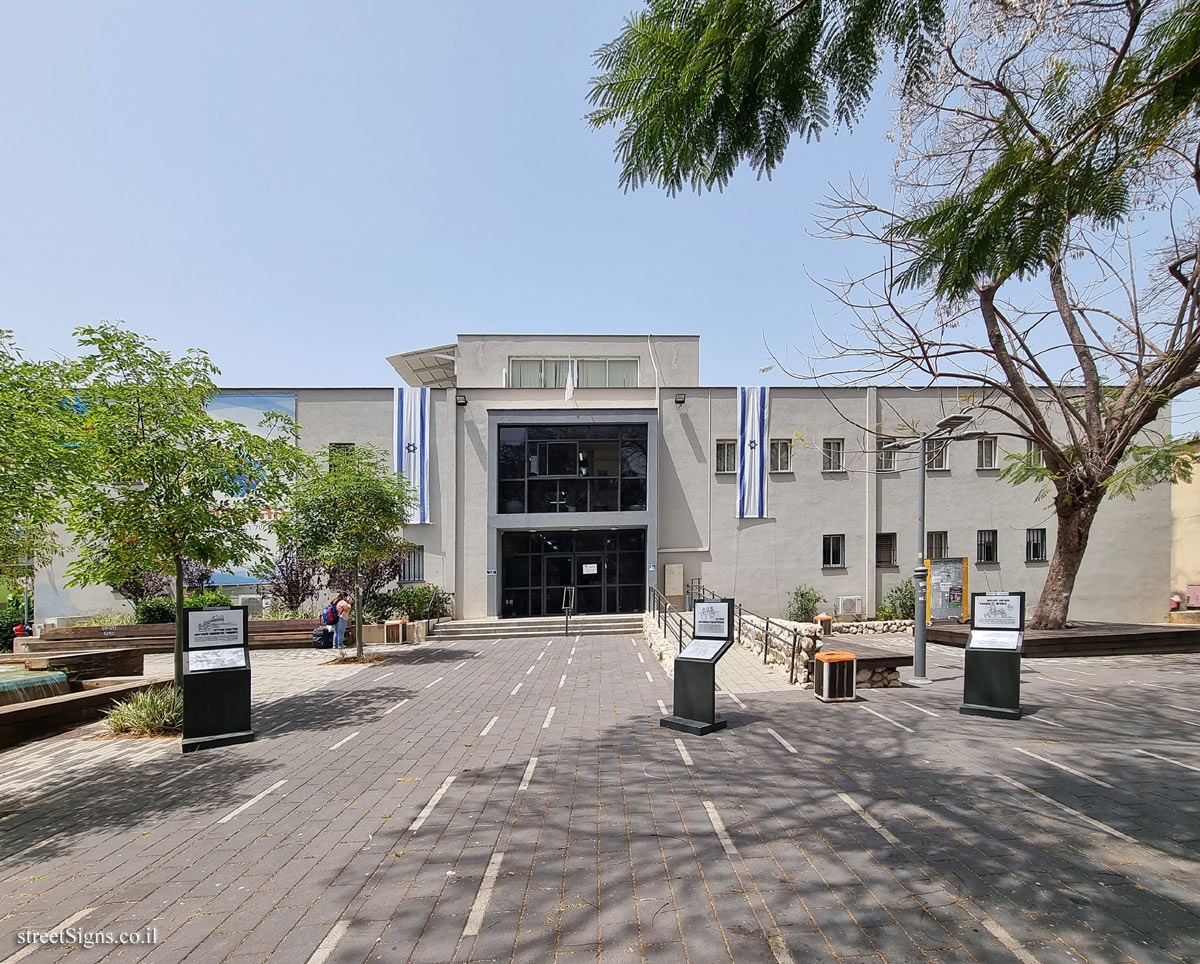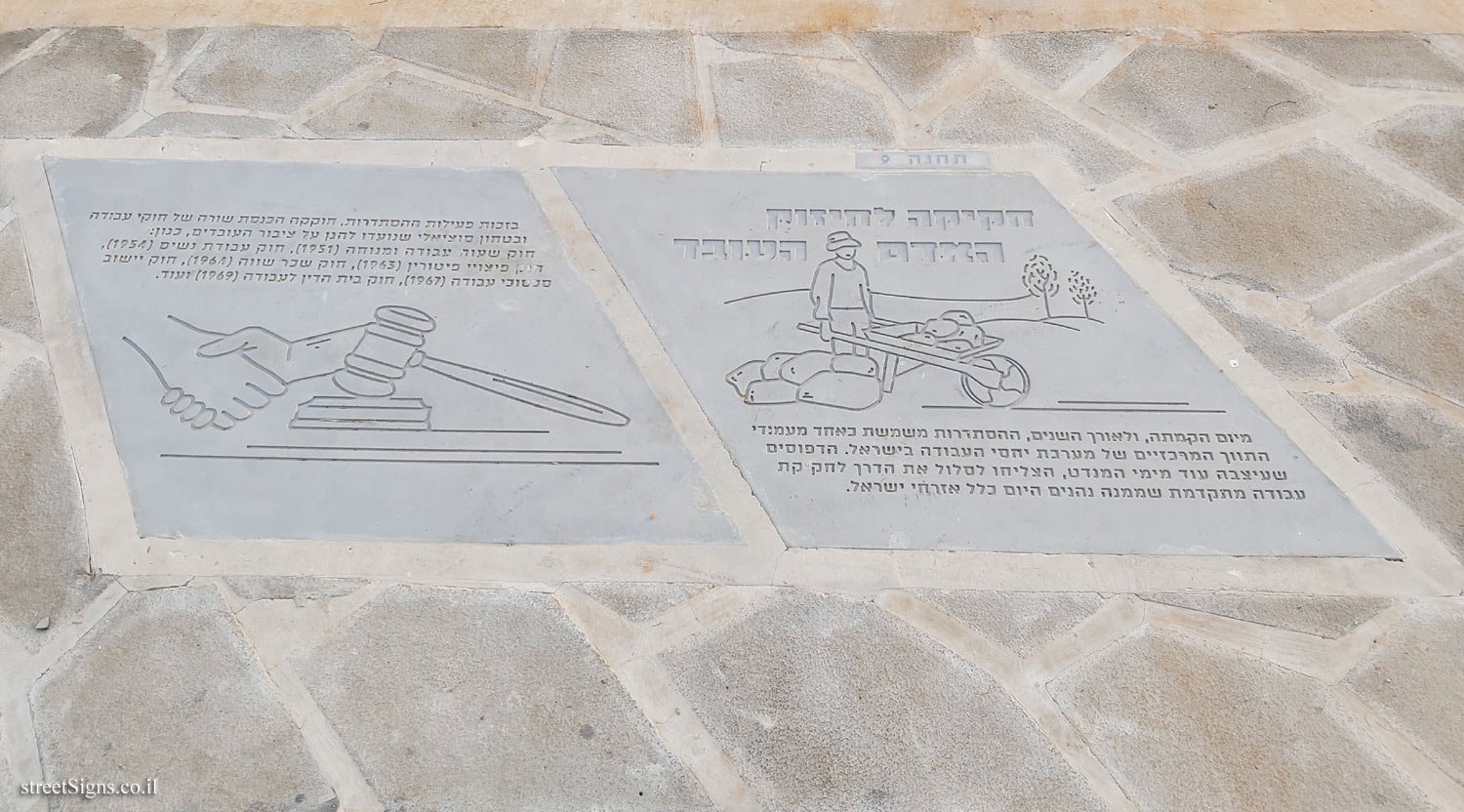One of the stations in the Histadrut Garden in Rishon Lezion, inaugurated in July 2020, with signs marking milestones in the history of the Histadrut.
The illustrations at the trail stations were made by Nofar Tzarfati.
A broad view of some of the stations was taken that day by the same photographer
 Click for a larger image
Click for a larger image Three months later, it was inaugurated in Tel Aviv next to the Histadrut building, the Histadrut Garden, with the Youth Movements Trail, which contains the same signs with the same text and illustrations (but the signs are made of stone and are on the ground)
 Click for sign's details Translation of the text on the sign
Click for sign's details Translation of the text on the sign:
Station number: 9
Symbol of the Histadrut - the home of workers in Israel
Legislation to strengthen the working person Since its inception, and over the years, the Histadrut has served as one of the main pillars of the labor relations system in Israel. The patterns it has shaped since the days of the Mandate have succeeded in paving the way for the legislation of advanced labor that all Israeli citizens today enjoy.
Following the Histadrut’s activities, the Knesset enacted a series of labor and social security laws designed to protect the working public, such as the Hours of Work and Rest Law (1951), the Women’s Law (1954), the Dismissal Compensation Law (1963), the Equal Pay Law (1964), Settlement of Labor Disputes (1967), the Labor Court Law (1969) and more.
Learn about:


 Click for a larger image
Click for a larger image  Click for sign's details
Click for sign's details